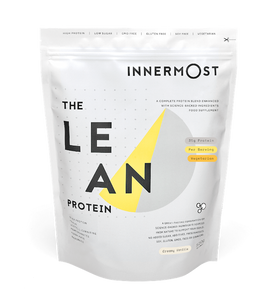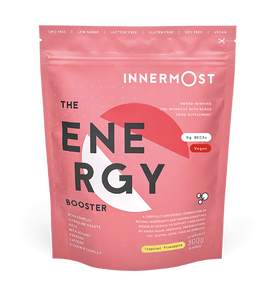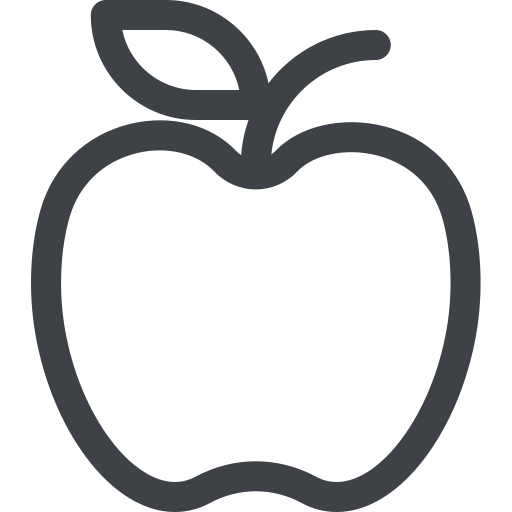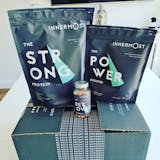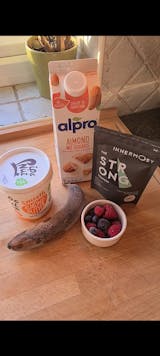Do you have a sweet tooth? Do you crave a little something-something sugary after you finish your evening meal? When you’re at a restaurant and are stuffed to bursting after your starter and main course, do you ask the waitstaff for the dessert menu before they’ve even cleared the plates? If so, you might be addicted to sugar.
We all love the sweet stuff. Whether your preferred poison is cookies, a fat slice of red velvet cake, chocolate gelato or an ice-cold can of Coke, sometimes you just have to indulge your sweet tooth. And that’s totally fine - just as long as it’s not every single day.
Eating a high level of sugar is associated with many kinds of chronic health conditions and decreased immunity. Autoimmune diseases, diabetes, heart disease, irritable bowel syndrome, pain syndromes and chronic fatigue all have links to sugar. The more sugar you eat, the less productive your white blood cells are and the better able your body is to fight off infection.
Sugar addiction is like any other addiction - it occurs when your mind and body get used to having too much of something, and you feel the effects when you stop consuming it. However, unlike addiction to alcohol or hard drugs, it’s not always necessary to completely give up sugar to feel better.
The amount of sugar that we as a society eat has been dictated to us by the food industry. The amount of sugar added to products such as bread, yogurts, sauces and prepared foods is shocking, and has risen rapidly over the last few decades. Even if your diet is the same as it was 20 years ago, it’s likely that you’re eating more sugar than you realise.
However, just as we have been trained to crave sugar, we can teach ourselves to crave it less. The more you eat something, the bigger affinity you have for it - so to reverse this process, you have to do the opposite. Here are just a few ways to condition your tastebuds and mind into craving something a bit less sweet.

Swap out your snacks
It’s unlikely that you’re eating that much sugar for the more substantial parts of your dinner and lunch, so instead let’s look at solving what’s likely to be more of a pressing problem - getting rid of excess sugar in your snacks.
Common snacks such as yogurt, granola bars, biscuits and cookies, dried fruit and chocolate are all high in sugar. While there’s nothing wrong with eating and enjoying these foods, they’re no ideal if your aim is to cut down on your consumption of sugar
A solution is swapping high-sugar versions of the above for lower sugar ones, or replacing them altogether with non sweet snacks. For example, a fruit-flavoured yogurt is likely to contain added sugar, whereas plain Greek yogurt will not. Top it with some nuts or use it as a dip for crudite to keep things interesting.
Savoury snacks such as a nourishing Innermost protein shake, hummus, vegetable sticks, hard boiled eggs, cheese and handfuls of nuts and seeds are all great (and tasty!) alternatives to sugary ones. The key is to make sure you don’t feel deprived, food-wise, otherwise you’ll head straight back into the arms of the sweet stuff. If you’d genuinely rather eat the red pepper hummus with crispy radishes than a chocolate bar, you’re winning the battle.
Work to a calendar
This is a good tactic if you often have pudding after dinner. You don’t have to quit the habit completely, but try cutting down on the numbers of days you do, or again replacing your dessert with something less sweet (cheese plate, anyone?). Beautifully cut fresh fruit is a great option for making your evening still feel special.
This reducing tactic will help your brain to stop associating the time after dinner with eating something sweet, so will help to reduce your cravings. If you eat out a lot, or order takeout a lot, it would also be worth getting out of the habit of ordering a sweet course every time you don’t cook yourself dinner. Desserts at restaurants are often jam-packed with sugary goodness, which is what makes them so craveable, of course.
Cut your number of sugar packets
Are you partial to a sweetened cup of coffee in the morning, or an afternoon brew loaded with two or three teaspoons of sugar? An easy way to reduce your sugar addiction and stop sugar cravings is to gradually reduce the number of sugars you add to your hot drinks. By cut the amount of sugar you add, but only every two to three weeks, your palate will get used to the taste of drinking things that are less sweet. Who knows, eventually you could try the tall americano with four pumps of caramel syrup you used to order every weekday and grimace at how sweet you used to like your coffee.
Drink differently
If you love a good cocktail, and you drink them often, this could be contributing to your high level of sugar consumption. As cocktails are made with spirits, they often contain a lot of sugar to offset the harsh taste of the liquor.
Instead, try making your own cocktails at home with fresh fruit and herbs instead of sugar syrups and other flavourings. Not only will this be vastly healthier, it’s likely that they’ll taste more of what they’re made of as opposed to just sugar, so you’ll drink them more slowly and will probably consume less alcohol. We have some great low-calorie beverage ideas here for you to check out.

